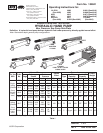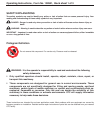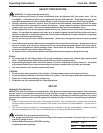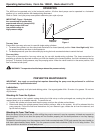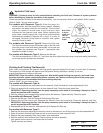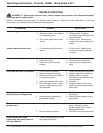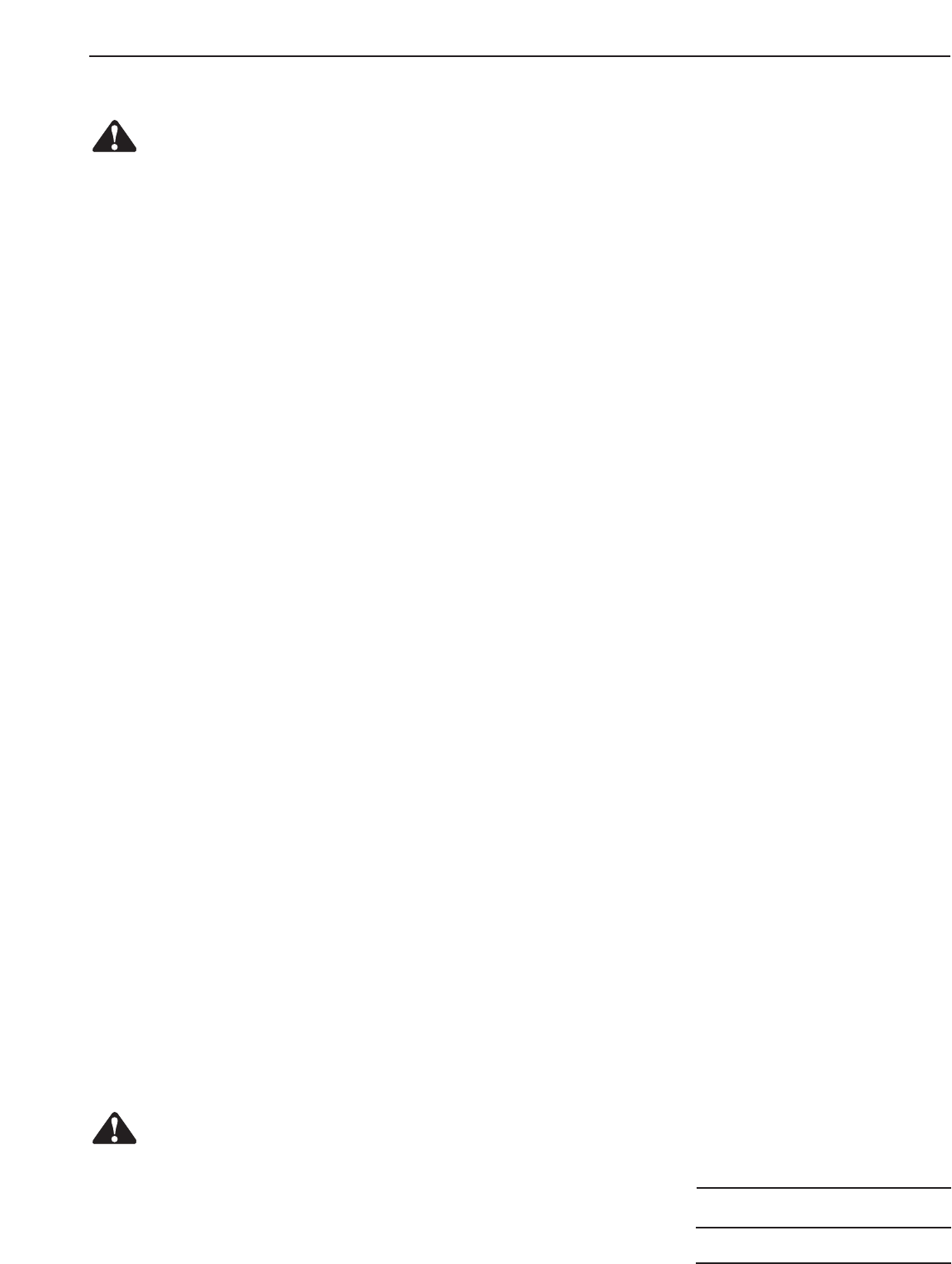
Operating Instructions Form No. 102841
SAFETY PRECAUTIONS
W
ARNING: To help prevent personal injury,
• Before operating the pump, all hose connections must be tightened with the proper tools. Do not
o
vertighten. Connections need only be tightened securely and leak-free. Overtightening may cause
premature thread failure or high pressure fittings to split at pressures lower than their rated capacities.
• Should a hydraulic hose ever rupture, burst, or need to be disconnected, immediately shut off the pump
and shift the control valve twice to release all pressure. Never attempt to grasp a leaking hose under
pressure with your hands. The force of escaping hydraulic fluid could cause serious injury.
• Do not subject the hose to any potential hazard such as fire, extreme heat or cold, sharp surfaces, heavy
impact. Do not allow the hose to kink, twist, curl, or bend so tightly that the fluid flow within the hose is
blocked or reduced. Periodically inspect the hose for wear because any of these conditions can damage
the hose and result in personal injury.
• Do not use the hose to move attached equipment. Stress may damage the hose and cause personal
injury.
• Hose material and coupler seals must be compatible with the hydraulic fluid used. Hoses also must not
come in contact with corrosive materials such as creosote-impregnated objects and some paints.
Consult the manufacturer before painting a hose. Never paint the couplers. Hose deterioration due to
corrosive materials may result in personal injury.
• All components in the hydraulic system must match the maximum pressure rating of the pump.
Pump
• Do not exceed the PSI rating noted on the pump nameplate or tamper with internal high pressure relief
valve. Creating pressure beyond rated capacities may result in personal injury.
• Before adding hydraulic fluid, retract the system to prevent overfilling the pump reservoir. An overfill
may cause personal injury due to excess reservoir pressure created when cylinders are retracted.
• The load must be under operator control at all times.
Cylinder
• Do not exceed rated capacities of the cylinders. Excess pressure may result in personal injury.
• Do not set poorly-balanced or off-center loads on a cylinder. The load may tip and cause personal injury.
• Stay clear of lifted loads and keep others away.
• Extensions are not recommended for lifting applications.
SET-UP
Hydraulic Connections
IMPORTANT: Seal all hydraulic connections with a high grade, nonhardening thread sealant. Teflon tape may
also be used to seal hydraulic connections if only one layer of tape is used. Apply the tape carefully, two
threads back, to prevent it from being pinched by the coupler and broken off inside the pipe end. Any loose
pieces of tape could travel through the system and obstruct the flow of fluid or cause jamming of precision-
fit parts.
1.
Clean all areas around the fluid ports of the pump and cylinder
. Clean all hose ends, couplers, and union ends.
Remove thread protectors from the hydraulic fluid outlets, and connect the hose assembly. Couple hose to
cylinder.
2. The use of a hydraulic pressure or tonnage gauge (not included) is strongly recommended. Remove the pipe
plug from the gauge port of the valve, thread the gauge into this port and seal as noted above.
W
ARNING: T
o help prevent personal injury
,
• The gauge must have the same pressure rating as the pump and cylinder. Personal injury can result if
the wrong gauge is used.
• Release hydraulic pressure BEFORE removing
or tightening hose couplings.
Sheet No. 2 of 3
Rev
. 4
Date: 23 Jan. 2001



